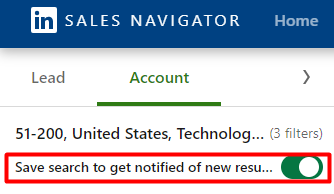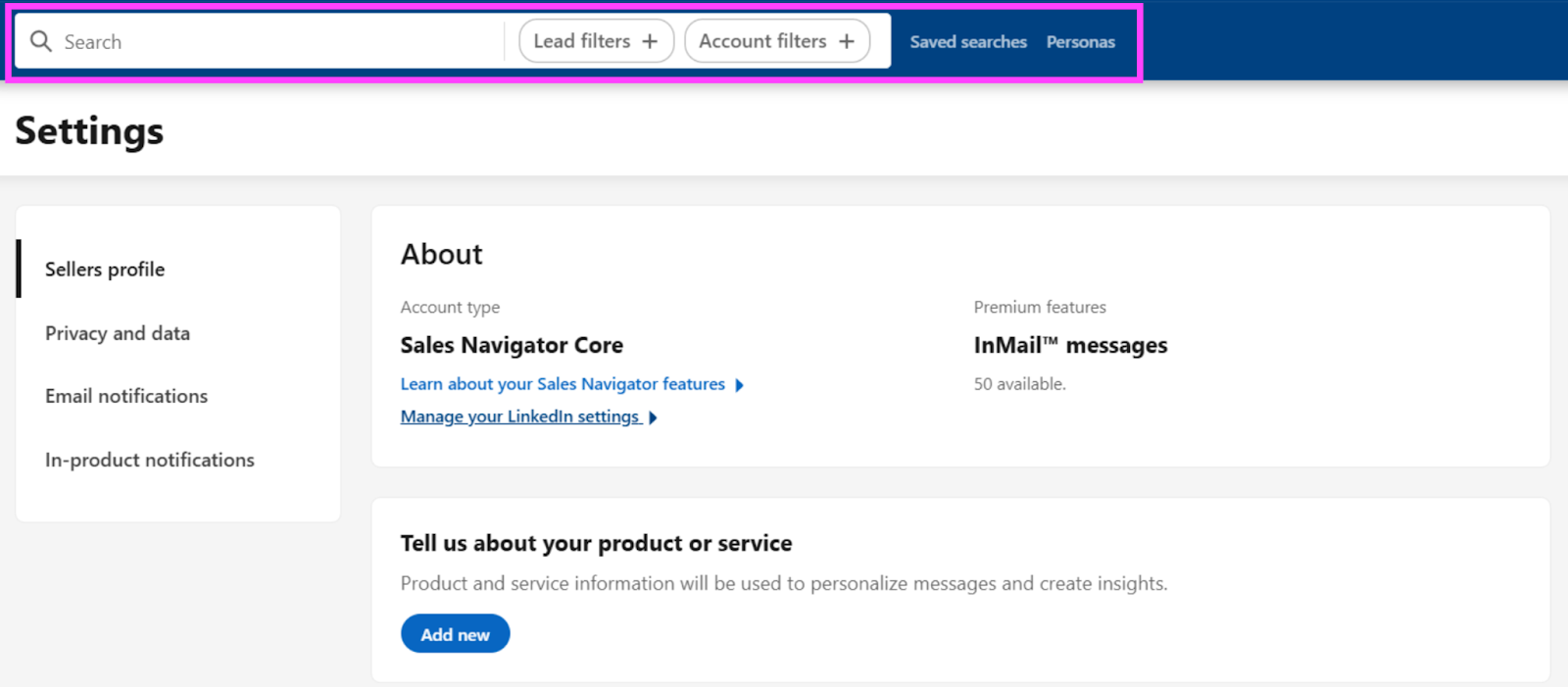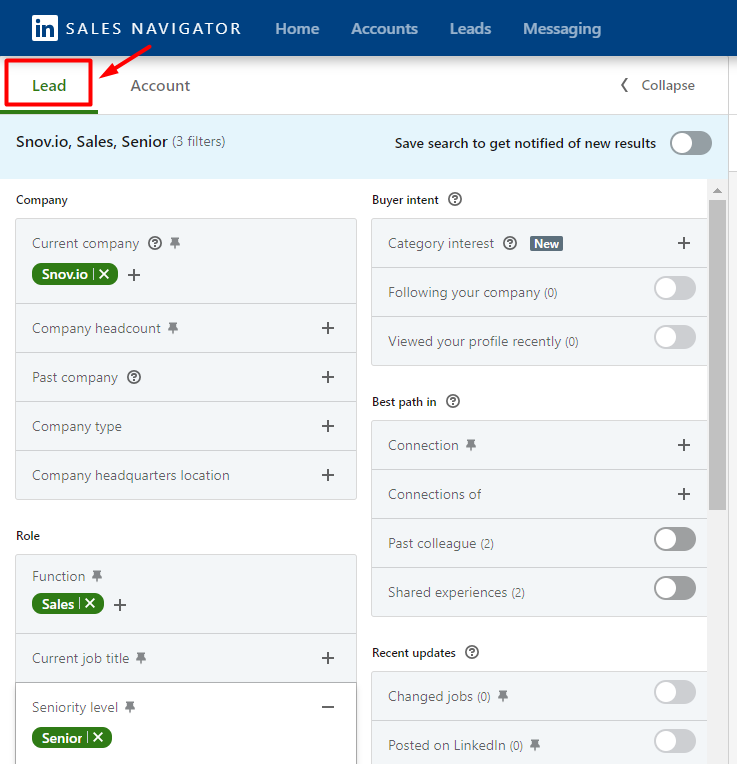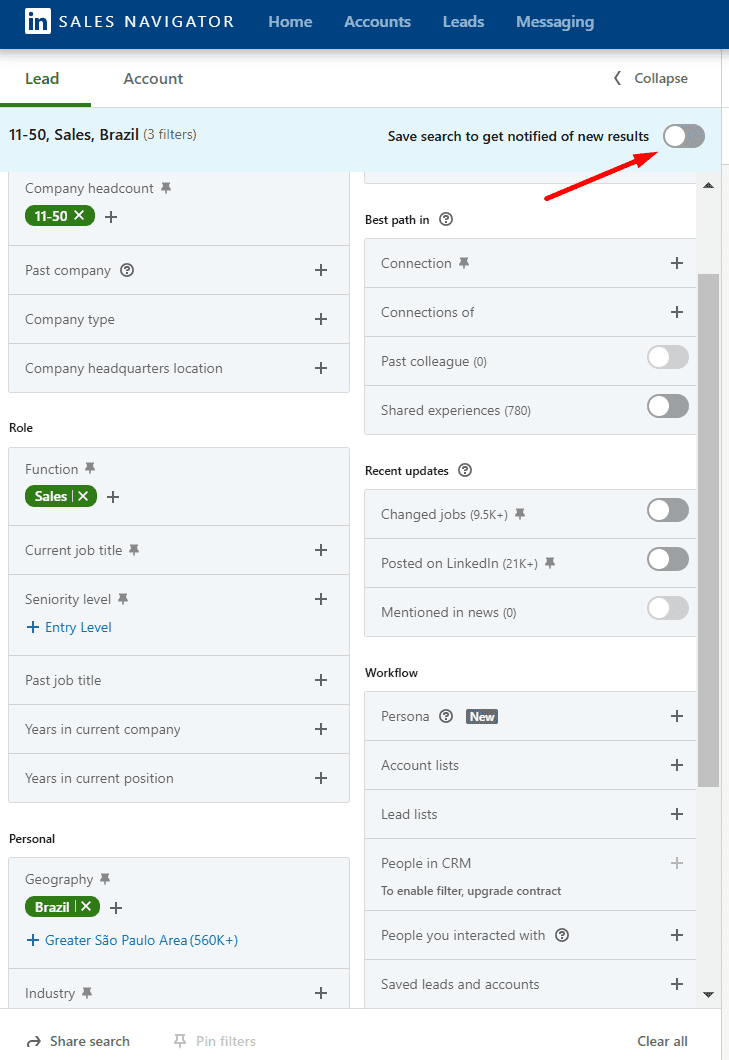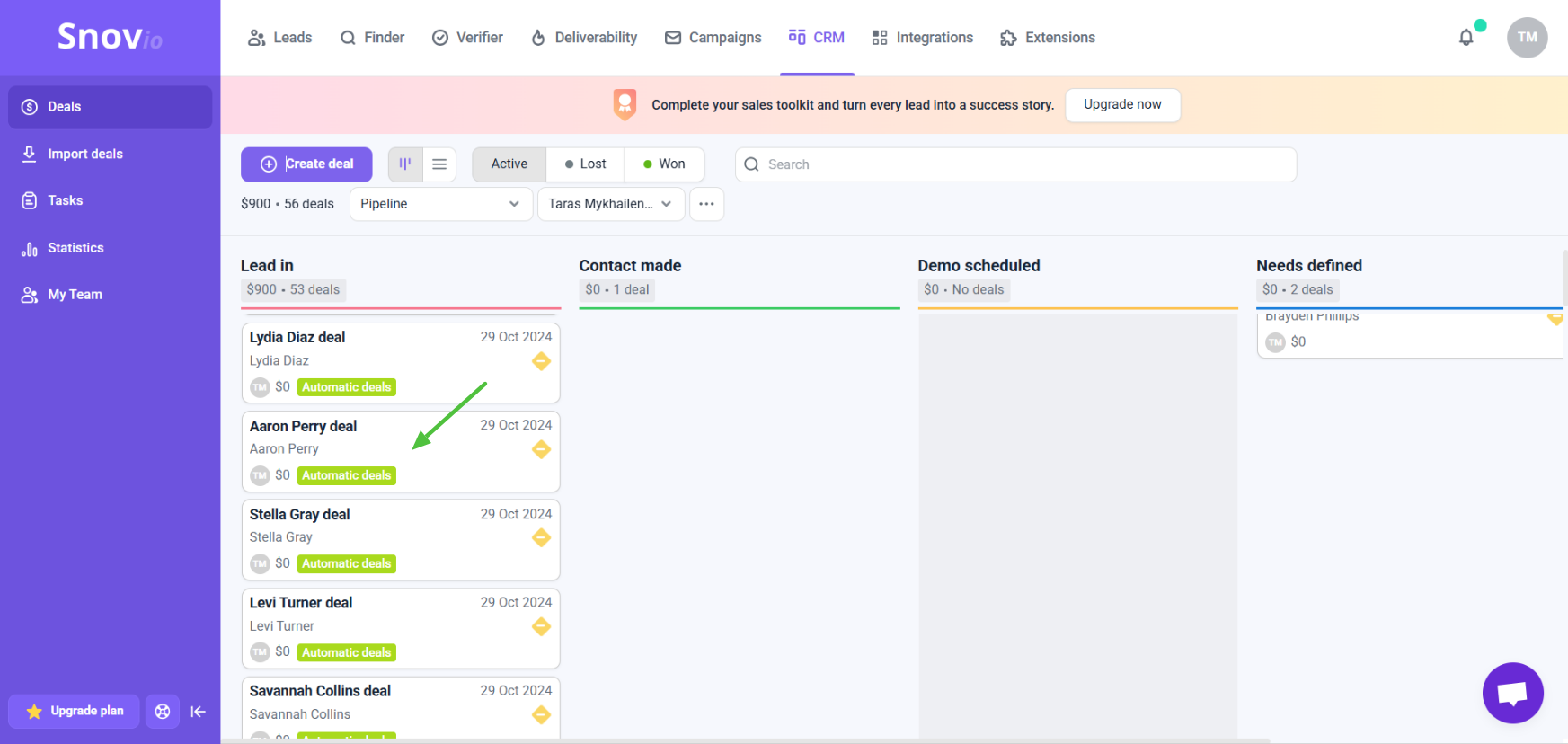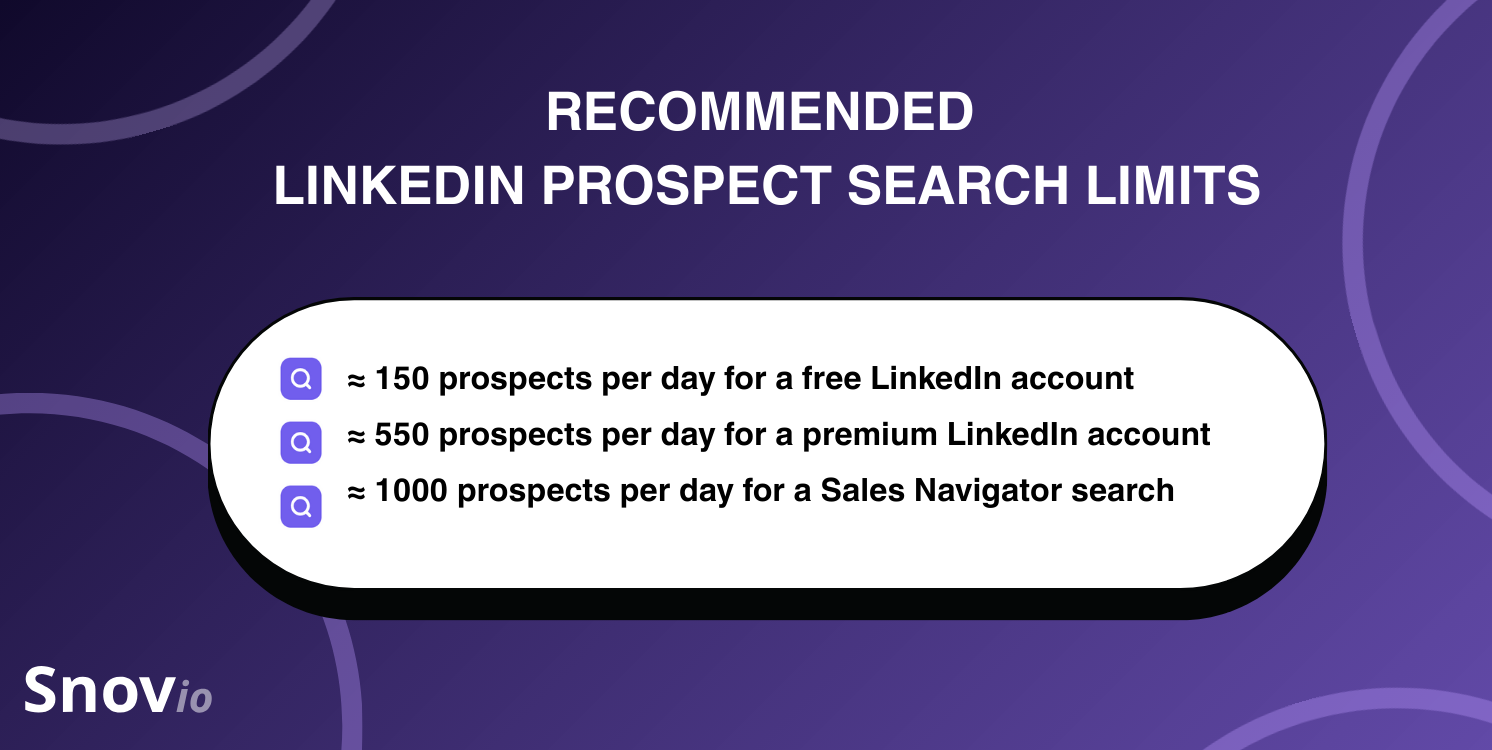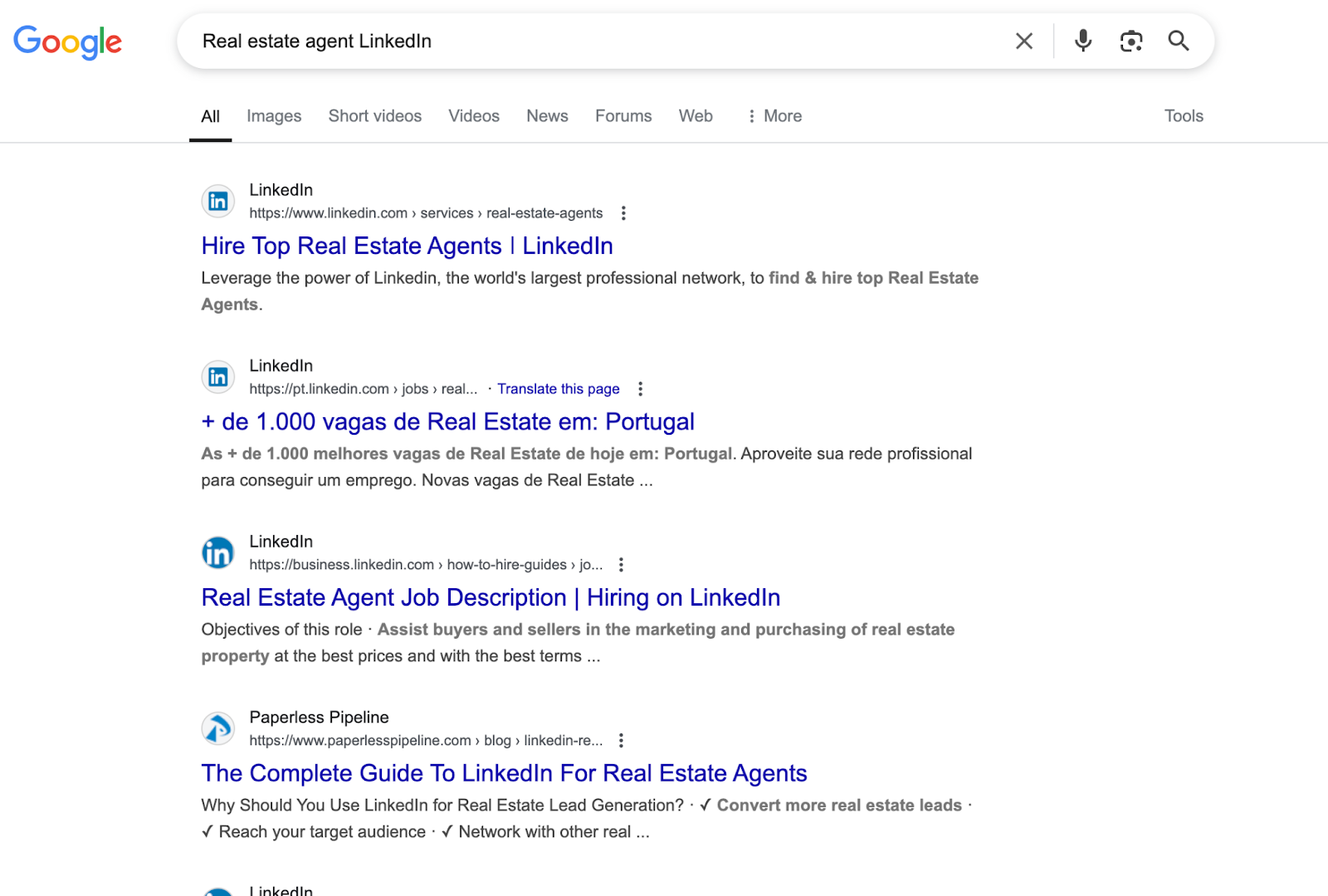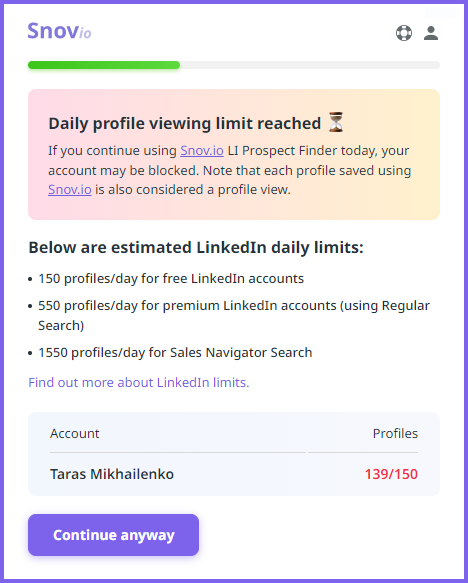TL;DR
Basic vs Advanced LinkedIn Search
I’ve summed up the key learnings about search options on LinkedIn in a table for you. Below in the post, I’ll explain why the advanced option is more effective and how to use Advanced Search filters properly.
| Feature | LinkedIn basic search | LinkedIn Advanced Search |
|---|---|---|
| Access | Free | Paid |
| Filtering options | 18 basic filters | Over 50 filters |
| Boolean search | Supported in the main search bar using operators like AND, OR, NOT, quotation marks, and parentheses. | Fully supported with enhanced capabilities, allowing complex Boolean queries across multiple fields. |
| Saved searches | No | Yes, with alerts on new matches |
| Result display limitations | 1,000 search results per query | 2,500 lead results and unlimited searches for the 1st, 2nd, and 3rd-degree connections |
| Lead recommendations | No | Yes, based on saved leads, account preferences, and search history. |
| Insights | Profile information | Access to deeper insights, such as recent job changes, mutual connections, and shared interests. |
Since LinkedIn is a business-focused social network, it’s obviously the right place for B2B sales prospecting these days. The problem, however, is that with 250 million users in the U.S. alone, the platform is packed with contacts that don’t match your needs.
How do you filter out irrelevant leads? LinkedIn offers something special — Advanced Search filters that are available on Premium accounts.
But is it worth the cost?
Let’s find out!
Key points of this article:
What you should know about LinkedIn’s search options
The easiest way to find leads on LinkedIn is to use its basic search feature by typing your query into the search bar. It’s located at the top of every LinkedIn page.
A query can be anything. For example, if you’re looking to sell a telehealth app, you might seek people involved in healthcare. Simply type “healthcare” in a search bar.
As soon as you do, suggestions will appear in a dropdown – click one or press enter to view all results. You’ll find personal and company pages that include this keyword either in their headline, About section, Experience list, or content.
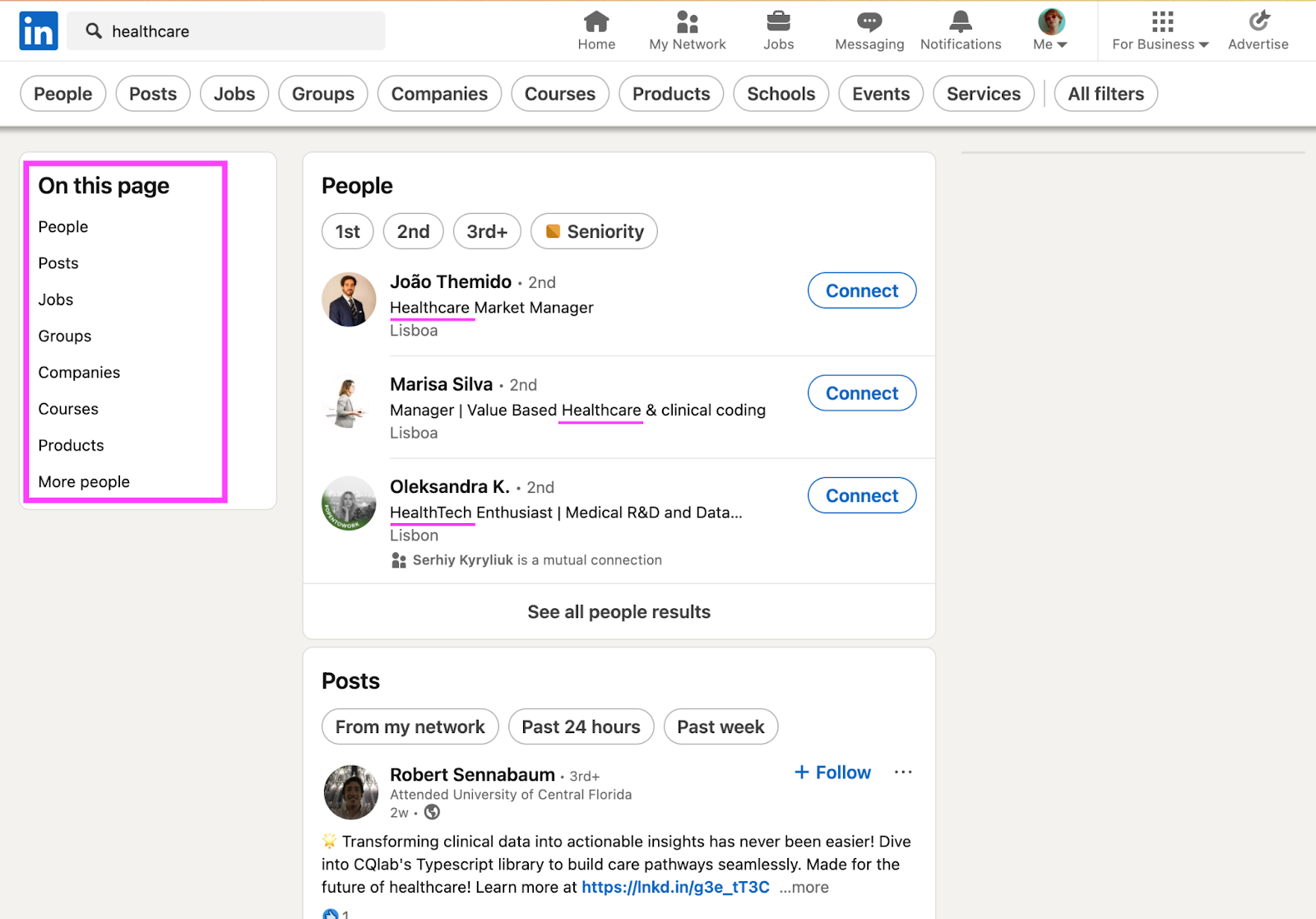
However, you will only be able to see the profiles and names of users in your network (first-, second, and third-degree connections, as well as group members). Basic search limits are also limited to a certain volume each month*.
LinkedIn doesn’t clearly state how many results each user gets with a basic account, claiming it depends on the user’s SSI.
In addition to limited results, basic search offers only 18 filters, most typical of them being:
- The degree (1st, 2nd, 3d)
- Location
- Current company
- Past company
- School
- A mutual connection
- Industry
- Profile language
- Opnennes to volunteering
- Service categories
Unfortunately, in niches like account-based marketing or sales, these filtering options aren’t enough for locating decision-makers. What’s the point of uncovering hundreds of potential leads if you can’t guess which ones are relevant?

Instead of wasting time, you can rely on LinkedIn’s Advanced Search.
What is LinkedIn Advanced Search?
Premium LinkedIn accounts, such as Recruiter and Sales Navigator, offer Advanced Search filters that let you easily find high-quality leads or candidates.
In this article, we’ll mostly focus on sales prospecting, discussing the filtering options of Sales Navigator in more detail.
Sales Navigator’s Advanced Search equips users with over 50 granular filters for both lead and account lookups, helping them pinpoint decision-makers faster.
They include:
- job function,
- seniority,
- buyer intent,
- content keywords,
- mutual interests,
- recent updates, etc.
As using the same filters repeatedly can be exhausting, Sales Navigator addresses this issue, enabling users to save a specific setup.
What’s also valuable is that with advanced lookup filters, you don’t have to worry about limits. It allows you to look up as many pages as you need every day, regardless of whether they are part of your network or not.
How to use LinkedIn Advanced Search filters: step-by-step guidelines
Applying advanced filters to your LinkedIn search is simple if you have a clear understanding of who you’re looking for. Thus, I strongly advise defining your Ideal Customer Profile (ICP) first.
💡Haven’t created an ICP yet? Learn how to do it quickly using only ChatGPT:
After you’ve specified who is likely to buy your product, it’s time to look for them on LinkedIn. Log in to your Sales Navigator account.
1. Start by typing a relevant query in the search bar at the top of the page. Then click on the Lead filters + to access the advanced filtering options.
2. Apply key filters to narrow down the results to profiles that match your ideal customer profile.
3. Add filters that help you identify prospects who are active on LinkedIn or whose companies have recently undergone significant changes. This will help you reach out to them at the perfect time.
|
“My 5 Sales Navigator filters that get responses when nothing else works:
|
4. Optionally save up to 50 lead and account searches in Sales Navigator. You’ll receive weekly alerts for new matches and be able to pick up on the buying signals.
How to build prospect lists from LinkedIn Advanced Search
Let’s say you found hundreds of relevant prospects for your business. Great! But now what?
You can view each lead’s profile individually and manually transfer their contact information to your CRM. Then you’ll export them into your campaign manager software and launch an outreach campaign or reach out to each one personally.
Will it be time and cost-effective for your business? Honestly, no. More so, you may encounter typos that would lead to wrong prospect data on your list.
I recommend you streamline the process by using automation software. It will save you hours of tedious work and also ensure higher accuracy. For example, with the LinkedIn lead generation tool from Snov.io, you can:
1. Transfer your prospect’s contacts directly to the chosen prospect list from LinkedIn’s Advanced Search. You can do it via Snov.io’s LinkedIn Finder extension or LinkedIn Search app feature.
2. Automatically connect with your leads and attract their attention by liking their posts.
3. Launch an outreach campaign that aligns with your leads’ active time, even when you’re offline. Snov.io automates the sending of both messages and InMails.
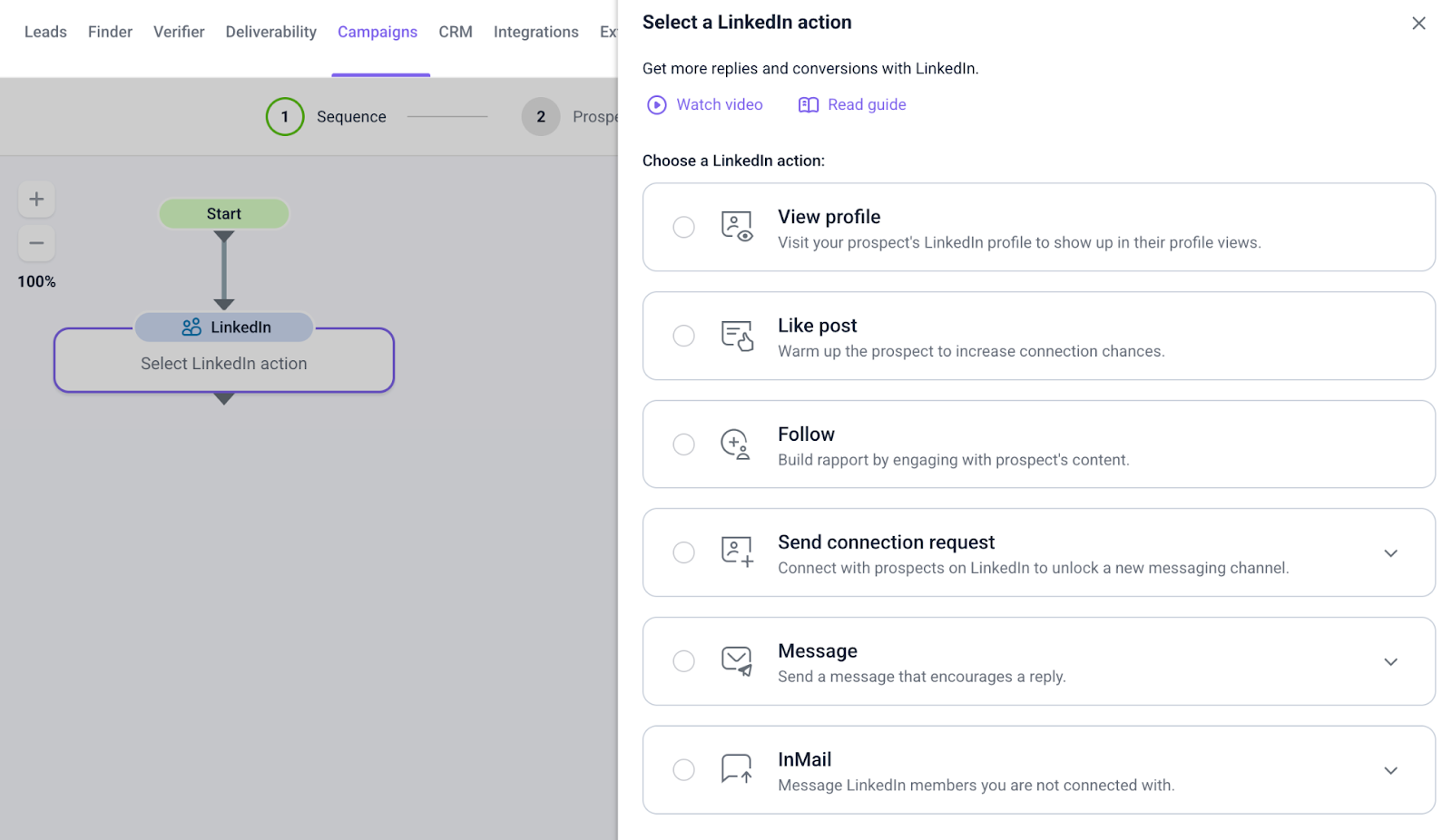
4. View the history of communication with each lead in the built-in CRM.
5. Filter your leads based on their level of interest in your offer, which our system determines by their last reply.
6. Analyze your campaigns’ results to optimize your lead generation and outreach strategy.
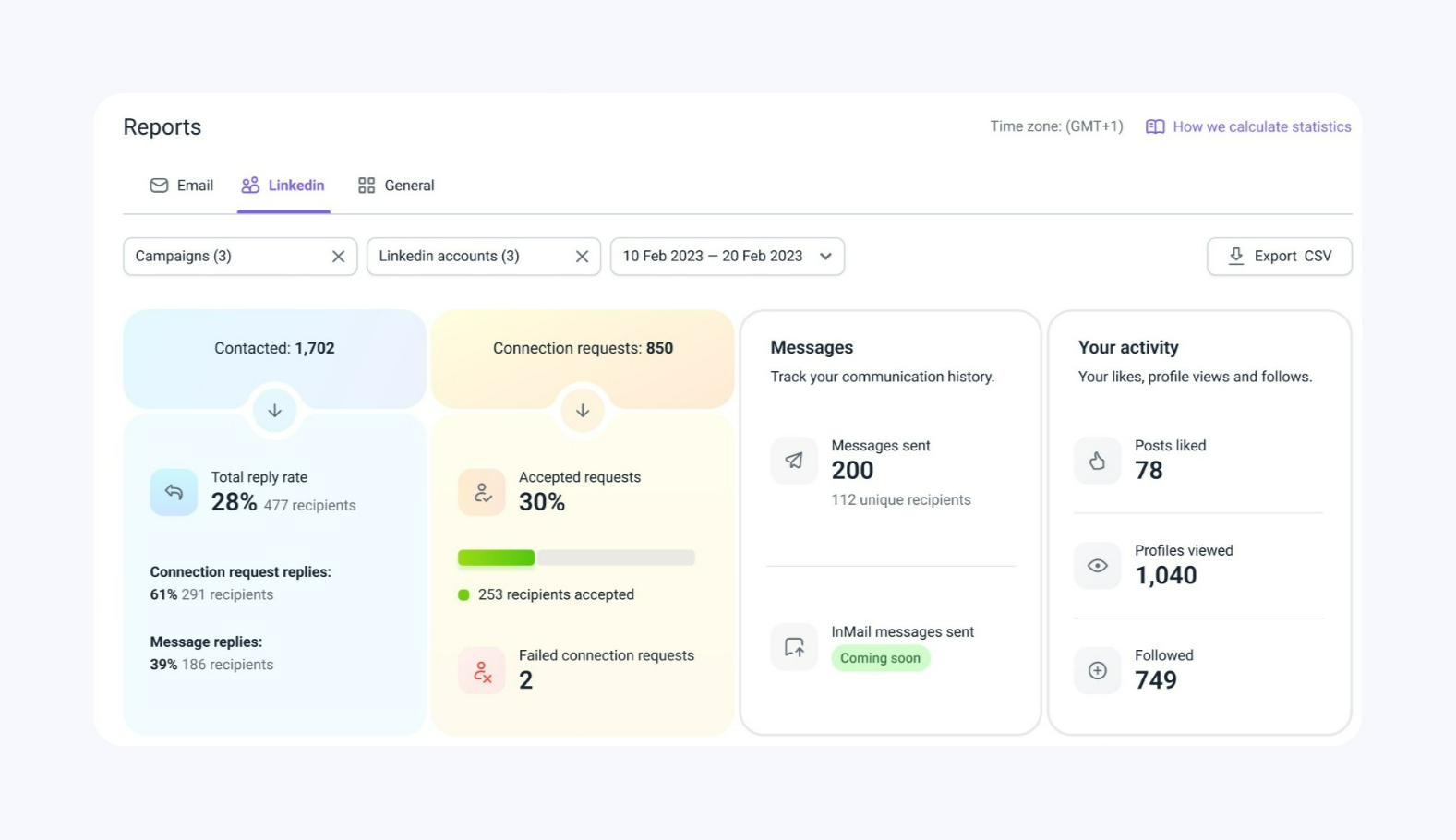
7. Keep your prospect list fresh by regularly filtering out unresponsive or inactive contacts. This will help you ensure better open and response rates.
Best practices for using LinkedIn Advanced Search effectively
The secret to finding the best leads on any social media doesn’t lie in the filters themselves. What matters is how you apply them. Below, we gathered top experts’ tips on using LinkedIn Advanced Search filters.
1. Be specific
The more precise your criteria are, the more relevant your results will be. Instead of a broad query like “designer,” opt for a more specific term like “UX designer.” Don’t be afraid to add multiple filters to narrow down your results even further. A few relevant leads are better than tons of users who wouldn’t be interested in your product.
2. Leverage Boolean search
I don’t know why, but Boolean operators are severely underused. Meanwhile, they can significantly enhance your lookup capabilities.
Boolean operators include:
- AND: Narrows results to include all specified terms (e.g., software AND engineer);
- OR: Broadens to include any term in a list (e.g., sales OR marketing OR advertising);
- NOT: Excludes a term (e.g., Product Manager NOT Intern);
- Quotes: Exact-phrase matching, essential for multi-word titles (e.g., “Marketing Manager”);
- Parentheses: Group clauses to build complex queries (e.g., (marketing OR sales) AND “SaaS”)
For more precise results, don’t use just one operator. For example, instead of “healthcare” AND “sales manager”, create a longer, more precise query like “healthcare” AND “sales manager” AND “London” OR “Bristol” NOT “pharmaceutical”.
→ Learn more about how to use LinkedIn Boolean search effectively.
3. Utilize multiple advanced filters
Specify details such as current and past companies, schools attended, and influencers followed. The more filters you apply, the more precise the results, hence the relevant leads you’ll find. This will give you a head start when contacting prospects.
4. Segment leads based on filters
Looking for several buyer personas within your ICP (e.g., sales reps and sales managers)? Apply corresponding filters and separate prospects into different lists based on these filters. This way, you’ll be able to better personalize your initial messages.
With Snov.io, for example, you can filter your automated LinkedIn outreach campaigns based on the degree of connection.
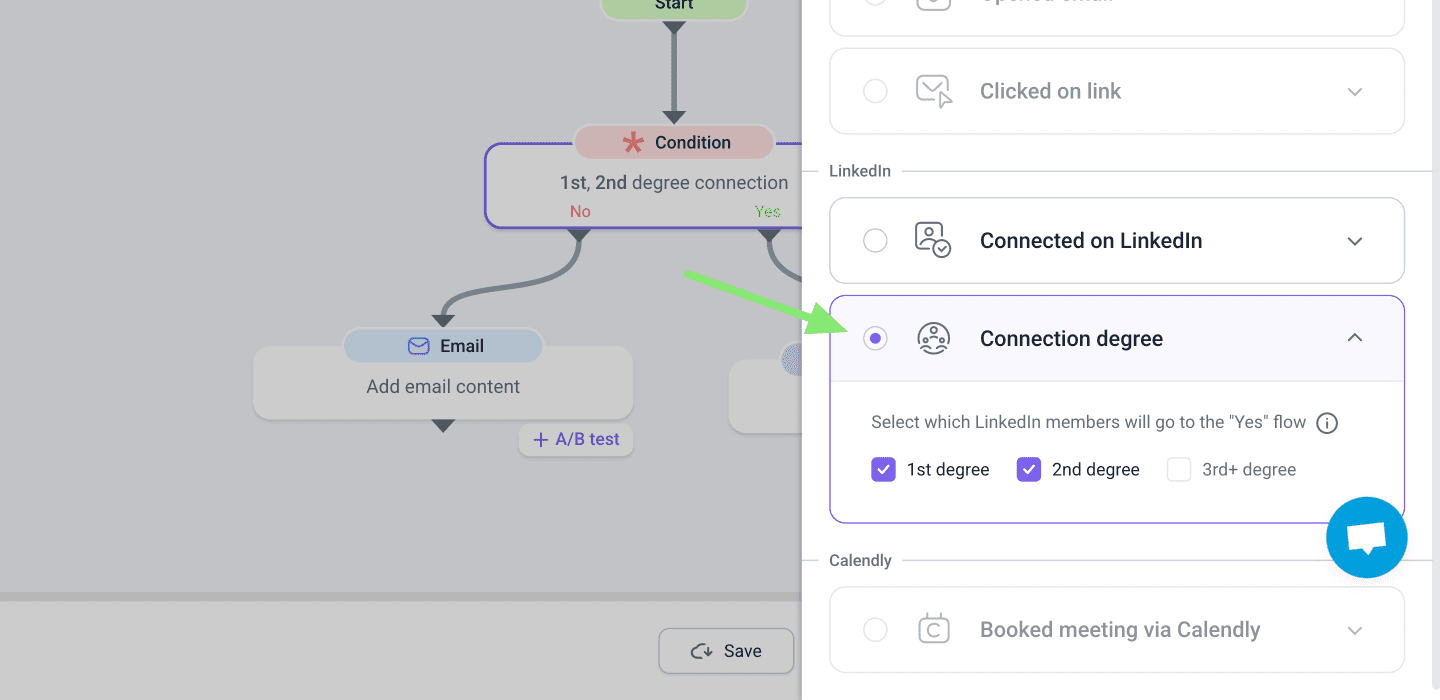
This helps you target your messages more precisely and make them safer by removing 3rd-degree prospects.
5. Save searches and set up alerts
Don’t waste time going through the same people multiple times. Enable saved lookup to get instant notifications every time new profiles match your criteria.
6. Employ automation
We said it before, and we’ll say it again – manually transferring data leads to inaccuracies. Don’t take that chance. It won’t cost a penny but will save you a lot of time and frustration.
7. Keep up with LinkedIn search limits
Automation is, without a doubt, your friend these days, but be careful with mass profile lookups. At Snov.io, we recommend staying below these limits:
Ways out?
You can try a Google search as an alternative. However, this option works well only when you have a specific individual in mind. Consider the example:
As you can see, looking for LinkedIn profiles in bulk through Google is not an effective method for contact acquisition.
For bulk search, rely on tools that comply with LinkedIn limits. For example, with Snov.io LinkedIn Email Finder, you can easily set safe limits, so the process stops as soon as it reaches the threshold.
What’s more, you can increase the waiting time between lookups to imitate human behavior.
Key takeaways
LinkedIn is an endless well of potential clients for B2B companies. Hopefully, after reading this article, you realize the importance of carefully filtering your search results.
Master the art of Advanced Search on LinkedIn to find prospects who are genuinely interested in your product. Combine advanced filters with Boolean logic – and watch your lead list grow. All the tools for automated lead generation you need are right here – in your Snov.io account.
It’s high time to take your lead gen game to the next level!

